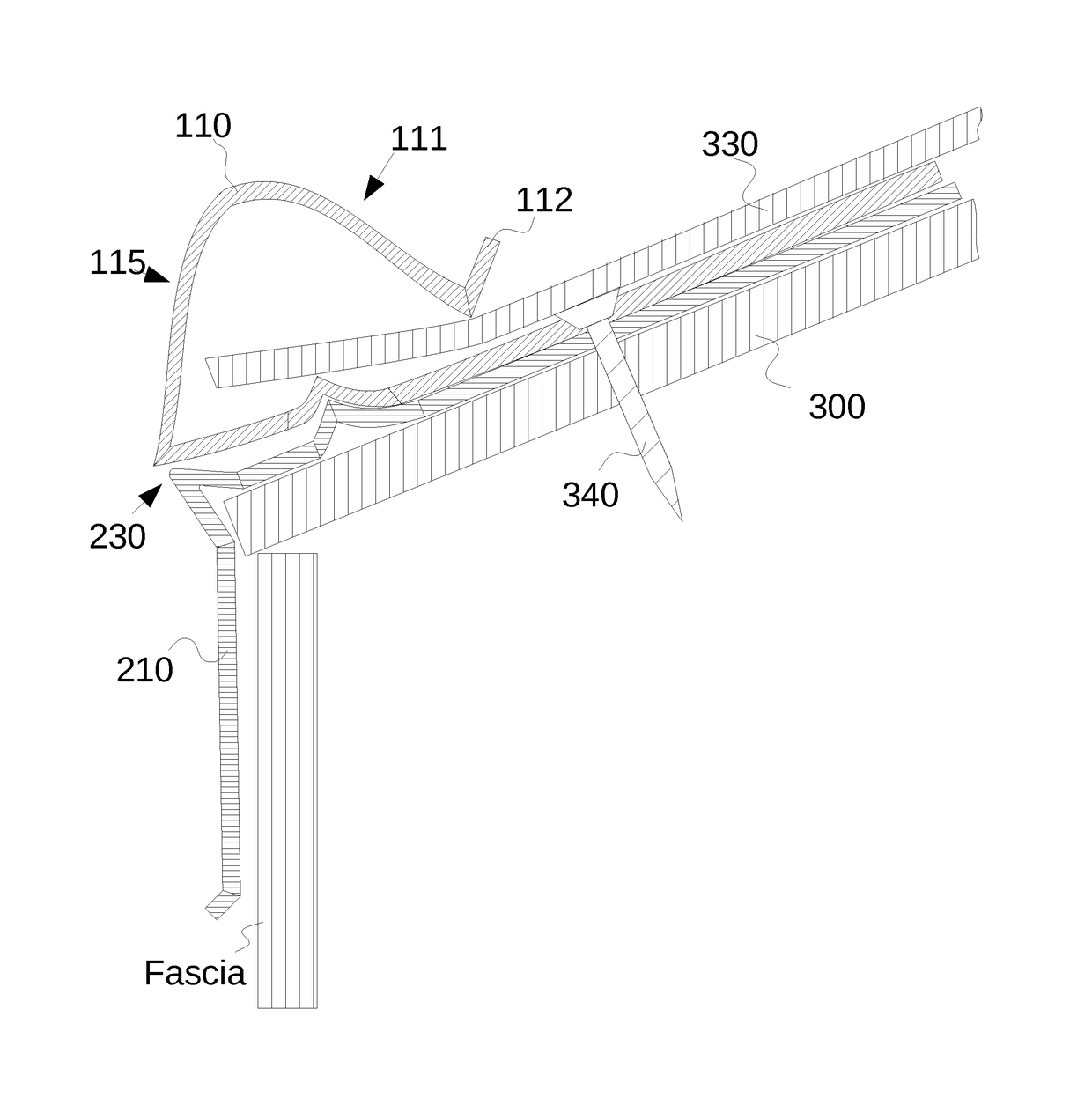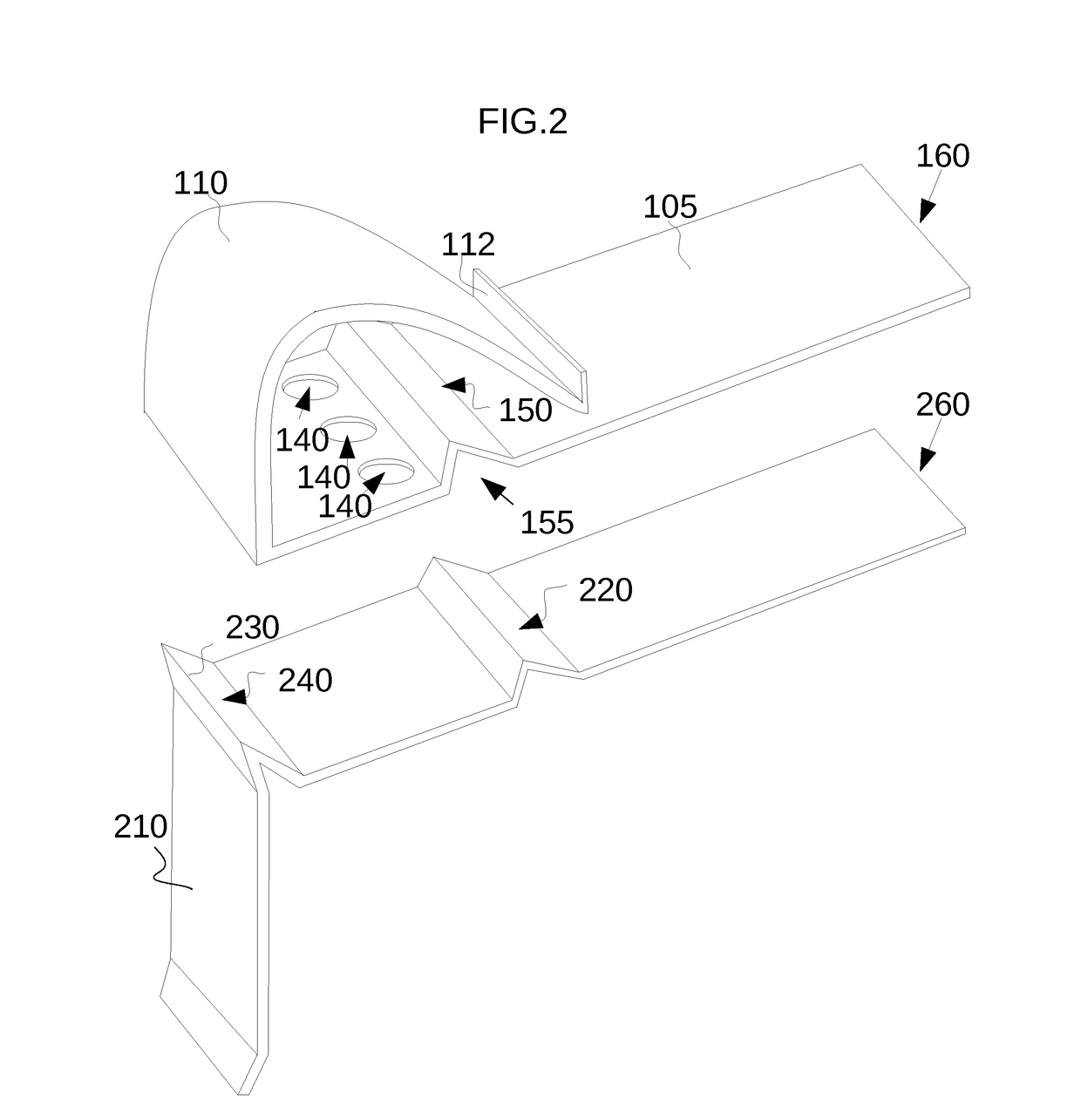Roof edge structure for securing roofing materials
a technology for roof edges and roofing materials, applied in roof coverings, roofs, constructions, etc., can solve problems such as still flow or leakage into the ridge structure, and achieve the effects of quick drying, improved roof edge appearance, and easy air circulation
- Summary
- Abstract
- Description
- Claims
- Application Information
AI Technical Summary
Benefits of technology
Problems solved by technology
Method used
Image
Examples
Embodiment Construction
[0020]The invention is related to a roof edge construction where a ridge structure 110 is formed along the edge of a roof. An inner slope 111 of the ridge structure 110 faces the roof surface, and an outer slope 115 that faces the opposite. When installed on a building, an observer on a ground level outside the building would only see the outer slope 155 because the inner slope 110 faces the roof surface and is hidden from the observer's view. When installed on a pitched roof, the inner slope 111 may face upwardly to the sky, and the base panel 105 over which the slopes are situated generally has the same pitch as the roof. The bottom of the outer slope 115 is attached to the base panel 105 whereas the bottom of the inner slope 111 is not. The bottom of the inner slope 111 may touch or not touch the base panel 105, but there is always a long narrow cut between the bottom of the inner slope 111 and the base panel 105. The base panel has a drain hole or holes 140 between the bottoms o...
PUM
 Login to View More
Login to View More Abstract
Description
Claims
Application Information
 Login to View More
Login to View More - R&D
- Intellectual Property
- Life Sciences
- Materials
- Tech Scout
- Unparalleled Data Quality
- Higher Quality Content
- 60% Fewer Hallucinations
Browse by: Latest US Patents, China's latest patents, Technical Efficacy Thesaurus, Application Domain, Technology Topic, Popular Technical Reports.
© 2025 PatSnap. All rights reserved.Legal|Privacy policy|Modern Slavery Act Transparency Statement|Sitemap|About US| Contact US: help@patsnap.com



